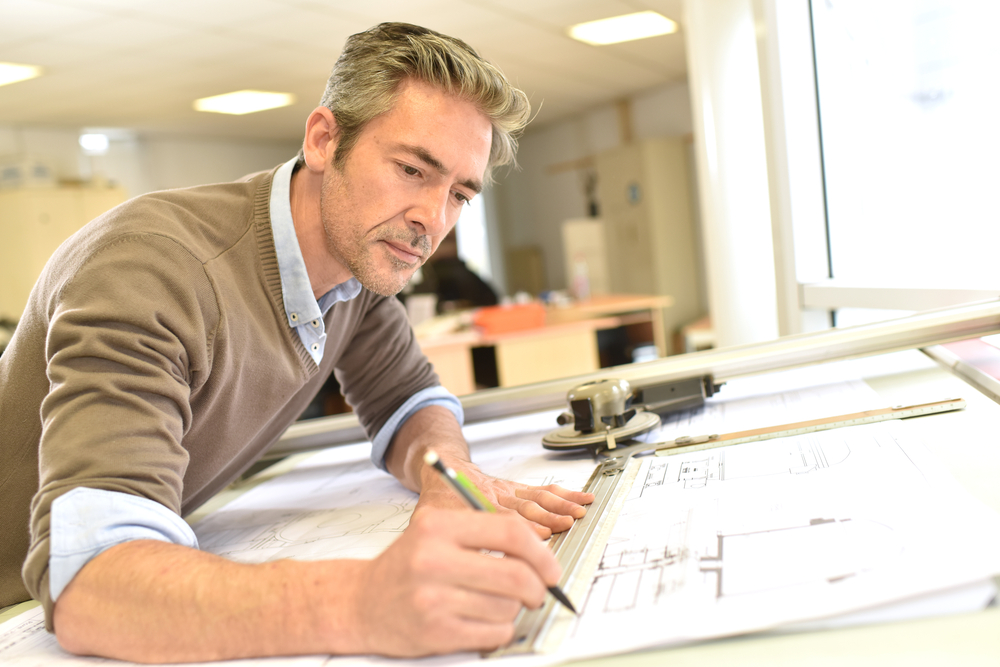Architect-Approved Home Renovation Ideas
Wiki Article
Understanding the Diverse Career Paths Available for Aspiring Architect
As a hopeful Architect, you have a world of profession courses waiting for you. Whether you're attracted to typical style or the nuances of lasting design, there's a specific niche that lines up with your passions.Traditional Style: Creating Buildings and Frameworks
Typical design concentrates on designing buildings and frameworks that mix performance with visual allure. As you explore this field, you'll value the detailed balance between form and function. You'll find out to attract motivation from historic styles, including components like proportion, products, and craftsmanship. Your styles can show social heritage, showcasing regional practices while meeting modern-day requirements.You'll develop abilities in preparing, model-making, and website analysis, enabling you to imagine and connect your concepts efficiently. Engaging with customers, you'll need to recognize their vision and convert it right into feasible styles.
Furthermore, constructing codes and sustainability methods are necessary in your job, ensuring your structures are risk-free and environmentally pleasant. As you grow in your career, you'll locate possibilities in household, industrial, and even repair projects, each offering distinct obstacles. Accepting standard design paves the means for a meeting career that pays homage to the past while forming the future.
Urban Planning: Forming Neighborhoods and Public Spaces
As a hopeful Architect, you can play a vital role as a city planner, changing exactly how areas function and interact. By utilizing area interaction strategies, you'll guarantee that locals have a voice in shaping their setting. Plus, integrating sustainable layout principles will assist develop rooms that not only meet today's requirements but likewise protect the future.Duty of Urban Planners
While several may assume of engineers as the single dreamers behind structures, city organizers play a vital function in forming the broader landscape of neighborhoods and public rooms. They examine land use, zoning legislations, and area needs to create sustainable settings that improve lifestyle. By teaming up with different stakeholders, you'll aid develop parks, transport systems, and suburbs that promote social communication and accessibility. Urban organizers also concentrate on environmental factors to consider, guaranteeing that advancements integrate green spaces and support biodiversity. Your proficiency in spatial layout and area characteristics enables you to visualize future development while maintaining cultural heritage. In this vital role, you'll straight affect exactly how individuals experience their environments, making every job a possibility for favorable adjustment.Community Involvement Methods
Efficient area engagement techniques are vital for city coordinators to guarantee that the voices of locals are heard and valued in the planning procedure. To promote significant dialogue, you need to focus on open forums and workshops where area participants can share their concepts and problems. By actively paying attention and including responses, you'll produce areas that mirror the area's requirements, eventually leading to more sustainable and successful metropolitan environments.Lasting Layout Concepts
When designing urban areas, integrating lasting layout concepts is critical for developing settings that thrive both environmentally and socially. You ought to begin by concentrating on energy efficiency, using materials that minimize waste and advertise recycling. Consider incorporating green rooms, like parks and gardens, to enhance biodiversity and improve air high quality. Promoting walkability and public transportation can lessen reliance on cars and trucks, fostering a much healthier neighborhood.Creating with water preservation in mind is additionally crucial-- consider rain yards and permeable surface areas to manage stormwater. Entailing neighborhood participants throughout the preparation process warranties that the spaces you produce satisfy their demands and urge social interaction. By accepting these concepts, you'll add to vivid, lasting city landscapes that benefit everyone.

Landscape Style: Creating Lasting Outdoor Settings
As you explore landscape architecture, you'll uncover vital layout principles that develop attractive and practical exterior spaces. Lasting practices play an important function in guaranteeing these settings thrive while decreasing ecological effect. Plus, you'll locate a variety of career opportunities that allow you to make a real difference in how individuals connect with nature.Layout Principles in Landscape
Comprehending layout principles in landscape architecture is important for developing sustainable outdoor environments that balance with nature. You'll require to consider components like scale, proportion, and balance to assure your styles really feel cohesive and welcoming. Additionally, pay attention to seasonal adjustments, making with products that complement the environments year-round.Sustainable Practices Review
Lasting techniques in landscape design not only focus on visual appeals yet also focus on eco-friendly wellness and source conservation. You can make areas that promote dirt wellness, such as utilizing organic materials and exercising permaculture principles. Eventually, these methods guarantee your designs benefit both people and the setting for years to come.Occupation Opportunities Expedition
With a solid foundation in sustainable methods, landscape design supplies a variety of occupation paths that permit you to make a meaningful effect on the environment. You can work as a landscape developer, creating aesthetically pleasing and useful outside areas, or focus on environmental repair, assisting to revive broken communities. Urban coordinators often collaborate with landscape engineers to create environment-friendly rooms in metropolitan settings, enhancing city livability. If you're enthusiastic concerning education, take into consideration coming to be a landscape architecture teacher, inspiring future generations. Additionally, you could deal with nonprofits focused on ecological sustainability or engage in research to introduce new methods. Each course not just shapes gorgeous settings but also promotes a much healthier planet for future generations.Lasting Style: Concentrating On Eco-Friendly Practices
As you explore your occupation in design, embracing environment-friendly techniques can set you apart in an affordable area. Sustainable design concentrates on creating structures that reduce ecological influence while boosting owner wellness. By integrating eco-friendly products, energy-efficient systems, and sustainable building strategies, you'll add to a greener future.Start by acquiring expertise of environment-friendly accreditations like LEED or BREEAM, which can bolster your credentials. Think about how natural light, air flow, and thermal performance can optimize design. Collaborate with designers and environmental specialists to introduce solutions that decrease waste and preserve sources.
Do not fail to remember the relevance of community participation-- appealing regional stakeholders can influence layouts that integrate with the atmosphere. As clients increasingly focus on sustainability, your experience in environmentally friendly practices will certainly not only draw in projects but additionally fulfill your passion for responsible architecture. Embrace this crucial element of the career, and enjoy your career grow.
Historical Preservation: Safeguarding and Bring Back Social Heritage
While you begin on your building trip, think about the essential function of historical conservation in maintaining our social heritage. This field concentrates on the defense and reconstruction of substantial structures, websites, and frameworks that inform the tales of our past. By taking part in historical preservation, you'll assist secure the building legacy that shapes neighborhood identity.As a historic preservation Architect, you'll analyze historical significance and examine the problem of structures. You'll work very closely with historians and guardians to guarantee authentic restoration from this source strategies are utilized. This job path enables you to mix creative thinking with research study, enabling you to design solutions that value initial materials and craftsmanship.
Your job not only contributes to sustainability by reusing existing structures but additionally fosters a sense of pride within communities. Accepting this path will certainly aid you come to be a guardian of history, maintaining the stories and appearances that enrich our lives.
Interior Architecture: Enhancing Indoor Spaces
Historic conservation and interior style both share a dedication to improving the built atmosphere, however they concentrate on various facets. home While historical conservation emphasizes keeping a framework's historical and social worth, indoor style absolutely nos in on enhancing indoor rooms for functionality and looks.As an ambitious Architect, you'll locate that indoor style permits you to mix creativity with technical abilities. You'll create rooms that not just look great but additionally advertise comfort and effectiveness. This area involves understanding just how light, color, and materials connect within a space, influencing mood and use.
You'll service numerous projects, from household homes to industrial workplaces, making certain that each environment meets the needs of its occupants. By focusing on individual experience, you can change insides right into useful and motivating rooms, making a substantial impact on exactly how people connect with their environments. Embrace the chance to enhance indoor atmospheres and shape the means individuals live and work.
Industrial Layout: Merging Performance With Aesthetics
Commercial style plays a crucial duty in developing items that flawlessly mix aesthetic appeals with functionality, ensuring that what you use daily is not only aesthetically appealing however additionally functional. As an aspiring Architect, you can involve on your own in this field, concentrating on making whatever from furniture to consumer electronics. Your job includes recognizing customer demands, products, and making procedures, permitting you to create ingenious options that boost day-to-day experiences.In commercial style, you'll commonly work together with suppliers, online marketers, and engineers, ensuring that your styles are not just lovely but additionally possible. You'll discover to stabilize kind and feature, focusing on functionality without giving up design. By honing your abilities in laying out, 3D modeling, and prototyping, you'll be well-equipped to bring your concepts to life. This find more profession path provides a dynamic environment where creativity fulfills functionality, making it a gratifying option for engineers thinking about forming the items of tomorrow.
Often Asked Inquiries
What Educational Certifications Do I Need to End Up Being a Designer?
To come to be a designer, you'll need a specialist degree in style, normally a Bachelor's or Master's. In addition, you'll need to finish an internship and pass the Architect Registration Evaluation to exercise legally.Are There Certification Requirements for Various Building Profession Paths?
Yes, there're certification requirements for various building courses. Architect. You'll require to pass exams, total internships, and occasionally pursue specialized training, depending upon your chosen emphasis, like landscape style, city design, or historic preservationWhat Software Program Skills Are Essential for Architects Today?

Exactly How Can I Gain Practical Experience While Researching Design?
You can acquire useful experience by interning at architectural companies, taking part in layout competitors, volunteering for community tasks, or teaming up with classmates on real-world projects. These opportunities boost your skills and develop valuable connections in the industry.What Work Opportunities Exist Outdoors Typical Design Firms?
You can explore different job possibilities outside standard architecture companies, like urban preparation, interior decoration, landscape architecture, construction monitoring, real estate development, or perhaps roles in sustainability consulting. Each offers unique challenges and incentives.Whether you're attracted to traditional design or the nuances of lasting style, there's a specific niche that straightens with your passions.When designing urban rooms, integrating lasting design principles is critical for creating environments that thrive both environmentally and socially.As you check out landscape style, you'll uncover essential style concepts that produce beautiful and functional exterior spaces.Understanding design principles in landscape architecture is crucial for developing sustainable outdoor settings that balance with nature.In commercial style, you'll frequently work together with manufacturers, engineers, and marketing experts, guaranteeing that your styles are not only stunning but likewise viable.
Report this wiki page